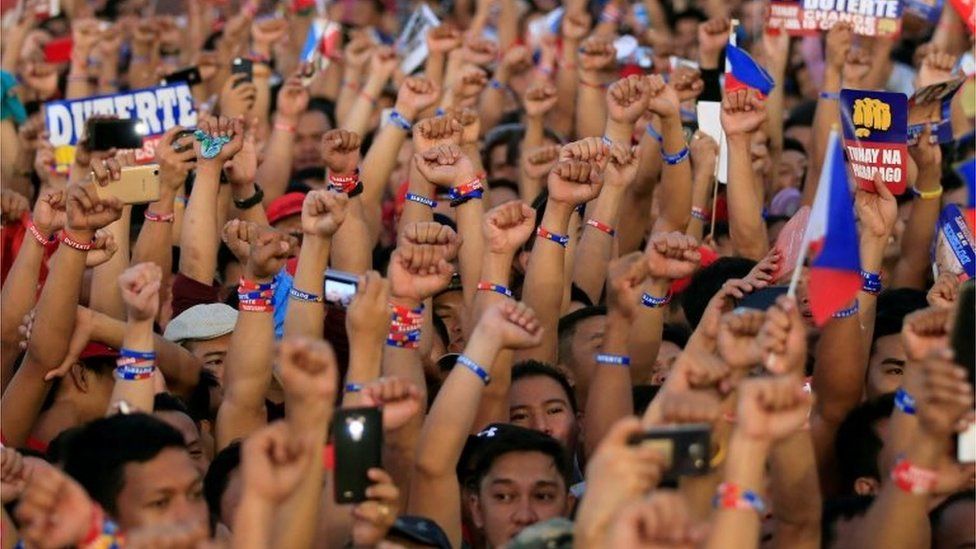by Carl Conetta, 1 July 2017
 Although Duterte had a reputation as an effective (if crude) mayor of Davos, he began his 2016 campaign with no strong political base outside his home island of Mindanao. He lacked the support of either a major political party or a substantial chunk of the Philippine oligarchy (outside Mindanao, at least). His electoral coalition was a hodge-podge of smaller, mostly conservative-nationalist formations but also religious groups and some leftists.
Although Duterte had a reputation as an effective (if crude) mayor of Davos, he began his 2016 campaign with no strong political base outside his home island of Mindanao. He lacked the support of either a major political party or a substantial chunk of the Philippine oligarchy (outside Mindanao, at least). His electoral coalition was a hodge-podge of smaller, mostly conservative-nationalist formations but also religious groups and some leftists.
His own party, the Philippine Democratic Party, had a history of strong anti-Marcos activism and nationalism, having been the platform for Cory Aquino’s election in 1986, but having since dwindled to a small regional formation. Duterte gained some broader left-wing support based on his relationship with the former leader of Philippines Communist Party, his self-description as a socialist (which he is not), his ‘common man’ image, and his pledge to seek peace with communist and Moro insurgents.
So how did he win? Image, issues, and social media were key. Those three ingredients plus a bump from social movements and a Filipino majority disenchanted with recent ruling parties won him the election.
The Duterte campaign relied on social media to build a “coalition of the aggrieved” by hammering at a range of salient issues: crime, drug use, urban congestion, underdeveloped infrastructure, exploitation of contract workers, the dominance of urban over agricultural areas, and the domination of ‘imperial” Manila/Luzon over other cites and islands. This occurred in a context where years of economic growth had delivered nothing to the poor and little to the middle-classes, also a context in which crime was rampant and infrastructure dilapidated despite economic growth.
Against the elite and well-spoken reformism of previous parties, Duterte campaigned as a ‘doer,’ a law and order candidate, a son of the poor, and a nationalist (in a political context where nationalism had a leftist anti-colonial appeal).

Once he won, legislators poured into his party. Some social movements had more-or-less supported him, and he rewarded them by giving four cabinet portfolios to leftists. But his economic program? It’s strictly neo-liberal with social programs added. He aims to create a more friendly business environment for both domestic and foreign capital, while also promising to direct more government spending to urban and rural infrastructure, education, healthcare, social protection, and job training.
Bibliography:
• Mong Palatino, “Is the Philippines’ Duterte Really a Leftist?”, The Diplomat, 02 May 2017.
• Malcolm Cook and Lorraine Salazar1, “The Differences Duterte Relied Upon to Win” (pdf), ISEAS Perspective (Singapore: Yusof Ishak Institute, 22 Jun 2016).
• Julio C. Teehankee, “Duterte’s Resurgent Nationalism in the Philippines: A Discursive Institutionalist Analysis,” The Journal of Current Southeast Asian Affairs (1 Dec 2016).
• Pierre Rousset, “The left currents in the Philippines and the Duterte presidency” (Eurioe Solidaire Sans Frontieres, 25 Sep 2016).
